Arca on the Warrior Princess Style of Her Performances at The Shed
Last year, even before the Hudson Yards’s new, massive arts venue The Shed was even finished being built, Arca (aka Alejandra Ghersi) inaugurated the space by performing within the construction site, making followers trail her around the half-built space. At one point, she sang on top of an upturned car, which looked almost like a shipwreck, floating in a pool of dirty water with its wheels still spinning. “For the Prelude to The Shed, I was really actually working through a trauma—like very consciously, in therapy—and I wasn’t sure if I should try and pretend that I wasn’t going through something,” the Venezuelan producer and artist explains of this first The Shed performance from her hotel room in downtown Manhattan. She’s been trying to get her Nintendo Switch connected to the TV so that she can play a video game she’s been obsessing over, but in the meantime Ghersi is sitting underneath a chandelier that she’s adorned with a long black wig, sipping Champagne and slowly eating french fries in a colorful, geometric Junya Watanabe top, paired with sparkling tights and black mary janes. “The gesture of having an upturned car was in relation to a car accident that I was in when I was very young—it wasn’t my car that flipped upside down, but one that I was staring at, and it was a really powerful image that kind of never left me,” Arca says, relating it to a recent experience near her house in Barcelona. “I was walking to the gym and I saw someone lying on the ground in a pool of blood. I walked into a crowd that was already standing still and silent, and everyone was in shock, standing still and silent. Everyone was reacting in totally different ways, myself included. I looked at someone in the eye and said something nice, like ‘How are you?’ I could feel myself disassociate. It’s beautiful that our minds do that to protect us from the ravaging, ripping, insane mystery of our own mortality,” she says. “That’s one of the things I love about fashion is it’s in virtue of that, not because of it or avoiding it or pretending that it doesn’t exist.”
At the end of September, Arca returned to The Shed to debut the site-specific performance Mutant;Faith, which can best be described as a shape-shifting three-night showcase. There was also a five-hour epilogue—one that will eventually be turned into a music video—that found Arca holding court, communicating this vital interest in fashion to an especially captive audience (everyone had to lock their phone away upon entering the venue). Each night was completely different, as Arca flitted around the stage’s various setups—there was a mechanical bull, a stripper pole with sensors on it that rendered it into a theremin of sorts, and a pit filled with dirt in the center of the stage that she writhed around in. “At first it was an idea of self-immolation,” Arca says of her original conceit for these performances. “It then went through a lot of iterations.” There were long silences at times, which Arca admits demanded much endurance from the audience. “That was just my way of trying to let people know that I was present and that I was there, listening, and that I wasn’t on autopilot in any way, shape, or form.”

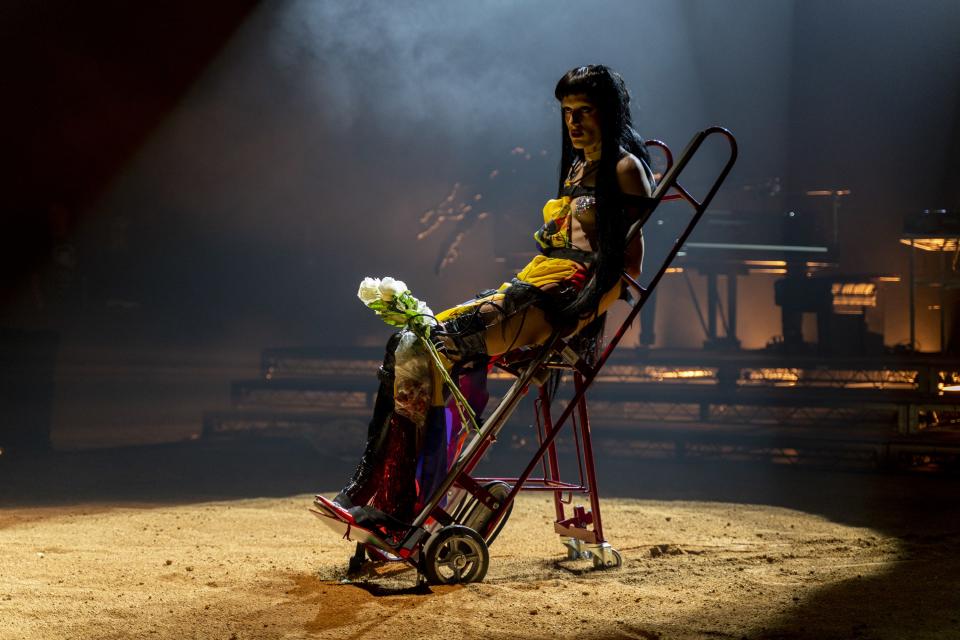
More than anything else, though, it was a true collaborative effort. Total Freedom helped soundtrack much of each night, Björk joined her for a song at one point, and artist Carlos Sáez created robotic laser wings that Arca walked out of the theater wearing at the conclusion of one of the shows. With her laser wings creating the illusion of a full-out light show, she walked out of The Shed onto the High Line with a gaggle of fans behind her. “We would talk about what we find beautiful. I feel really grateful that we have the opportunity to choose collaborators that have shared goals. A creative act is a reconciliation of how deeply or softly or delicately one feels something to be and trying to express it through a show, because it’s a show after all—there’s smoke and light and lasers.” Nail artist Juan Alvear (who you might know better by his Instagram handle, @nailsbyjuan.nyc) also worked with Arca on different sets of surreal designs for the performances, crafting one set in particular out of crunchy sugar crystals. Arca ate them onstage to a semi-shocked crowd, who likely assumed they were acrylics. “I can’t believe some people sat through some of the insanity those nights,” Arca says, laughing.
Working with stylist Natacha Voranger, Arca’s ever-changing onstage wardrobe mirrored the free-form nature of the show itself. While her show employed cutting-edge technology with all of the robotics and sensors, some of the pieces she wore onstage felt nostalgic by comparison. She brought back the mechanical legs that you probably first saw in the music video for “Reverie,” from her self-titled third studio album. They were originally designed for cosplay—they can be outfitted in just about any material, including fur, prosthetic skin, and more—but Arca leaves them bare and wears them as stilts. “They’re beautiful. I want to wear them until I die,” she says. Overall, the wardrobe for The Shed show almost charts Arca’s clothing archive over time. “I don’t throw stuff away. Vivienne Westwood once said something about wearing stuff until it falls apart. I don’t want to abandon pieces—I want to keep them around and let them morph.”
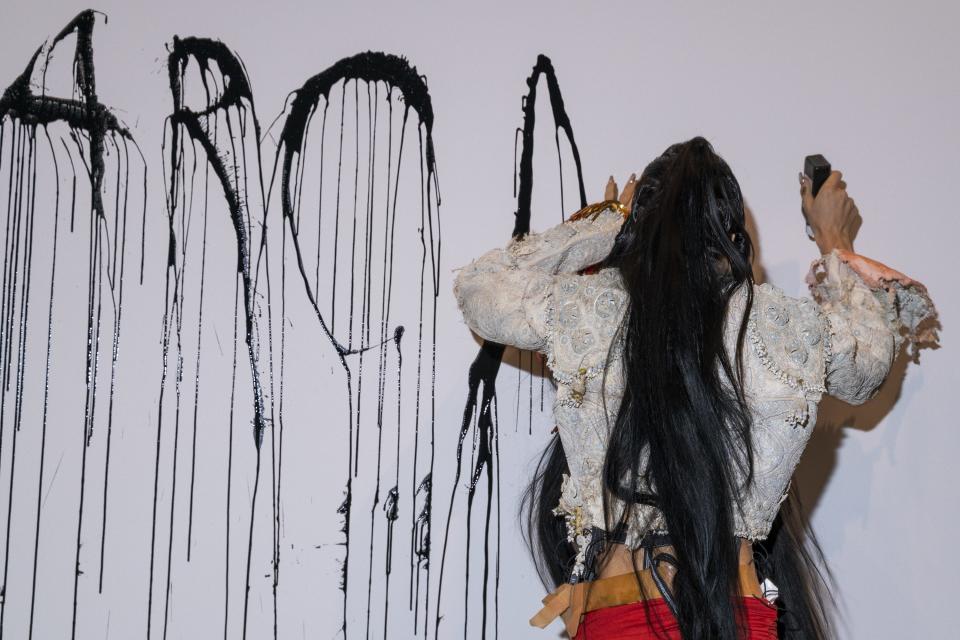
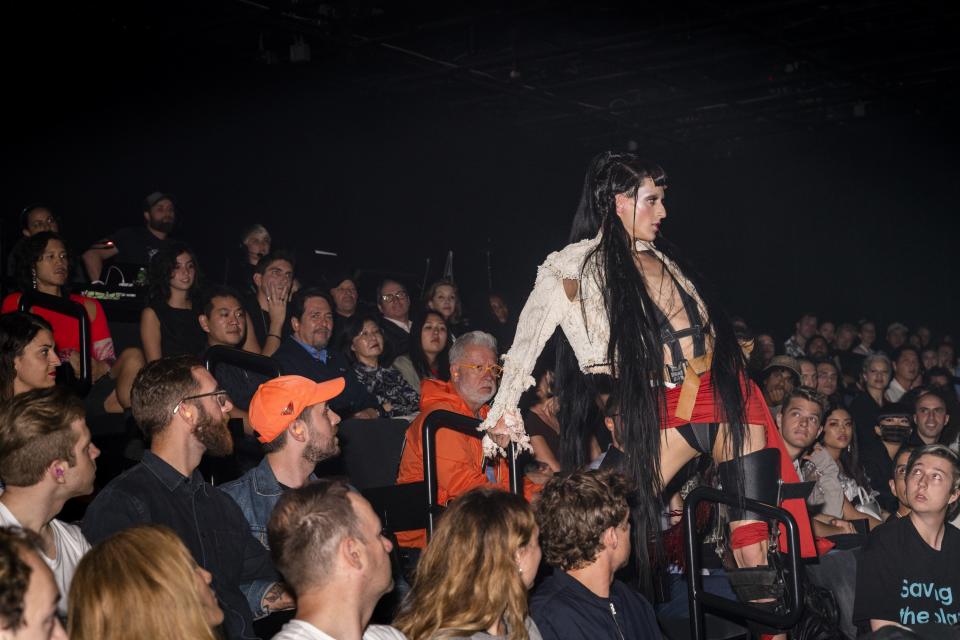
The bullfighter’s jacket, too, is a recycled piece, one that Arca originally wore in that very same video. She spray-painted it red during one of the performances, which adds yet another chapter to its storied history—it was a handmade piece from Mexico that stylist Akeem Smith originally commissioned for her. Smith and Arca then sent it out to London-based designer Asai, who distressed it, and then on the video shoot a few years ago artist Jesse Kanda, one of Arca’s main collaborators, suggested that they treat it with a pearlescent glaze that prosthetics artist John Nolan uses. “I didn’t identify publicly as a trans woman then, and bullfighting being such a gendered blood sport, it had a different connotation for me this time around. I was thinking a lot about Talk to Her, Hable con Ella, the Pedro Almodóvar film. It’s about someone that has to tape her bullfighter jacket up tight over her breasts.”
In addition to these ever-changing classics, Arca wanted Voranger to help push her aesthetic limits even further. “I always encourage her to bring accessories so we can propose a look based on many small pieces and not have too many statement pieces because the story I’m trying to tell is a battle-ready warrior princess in some ways. She’s kind of like Aeon Flux: She has a lot of skin exposed and she’s going through a battlefield.” With the floor-length, ruffled Vaquera gown that Arca and Voranger paired with the very cyberpunk Ikeuchi helmut, though, Arca reshaped her stylistic conceptions of this character. “I would never have chosen that because I’m always thinking about this form-fitted silhouette for this warrior princess. I really like that about working with Natcha—she shows me pieces I would have never thought to take off the rack to try on.” The Venezuelan flag that Arca fashioned into a dress on the first night, too, was Voranger’s idea—Arca just requested the flag, but Voranger insisted that they turn it into a halter dress by installing a makeshift drawstring—and Voranger also introduced Gauntlett Cheng to Arca’s distinct universe, after which she wore one of their signature wrap dresses onstage. There were also pieces from designers that Arca already knew that she loved, including some custom GmbH garments and some from Wesley Berryman (she says she’s obsessed with the Maleficent-esque shoulder silhouettes that he creates).
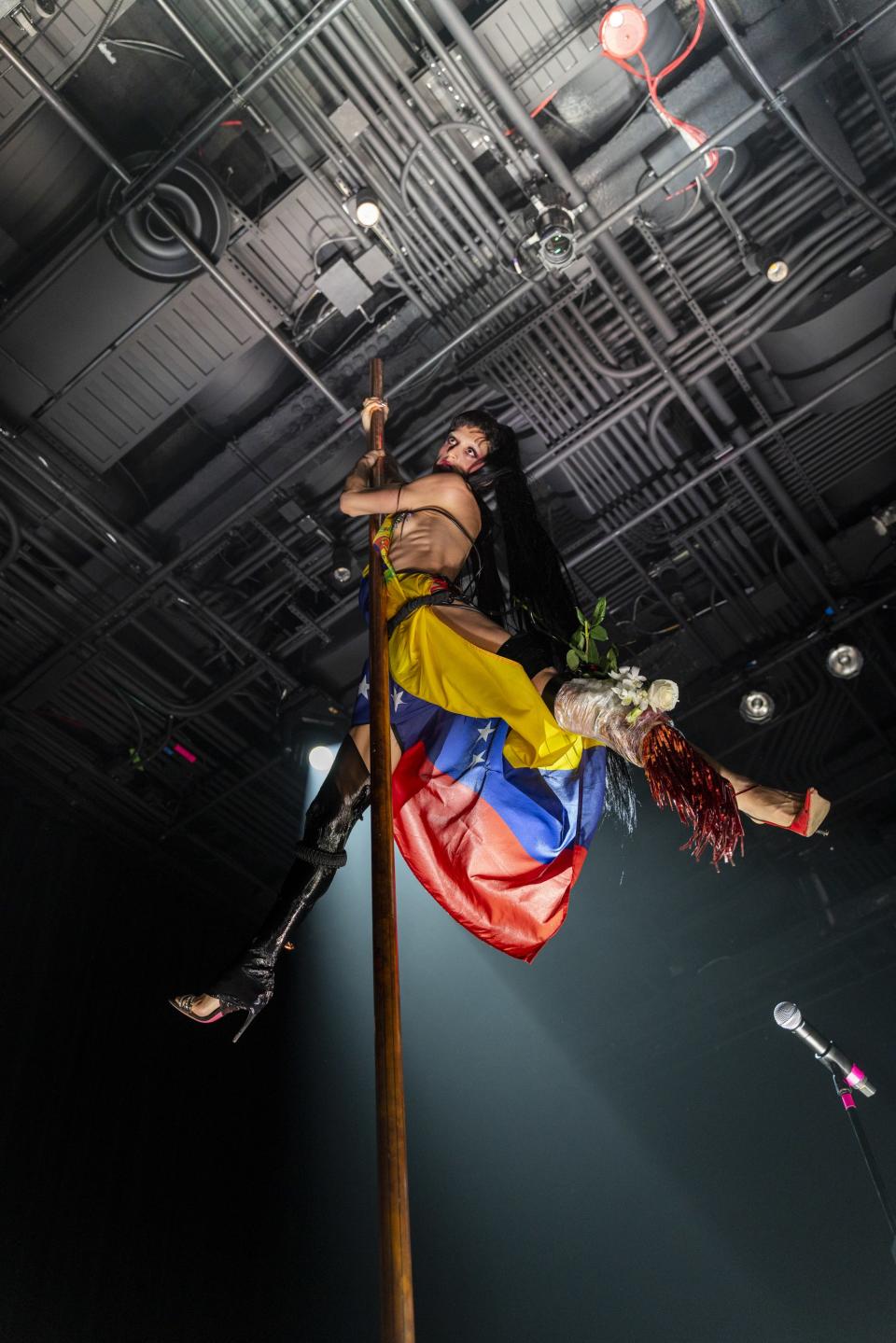
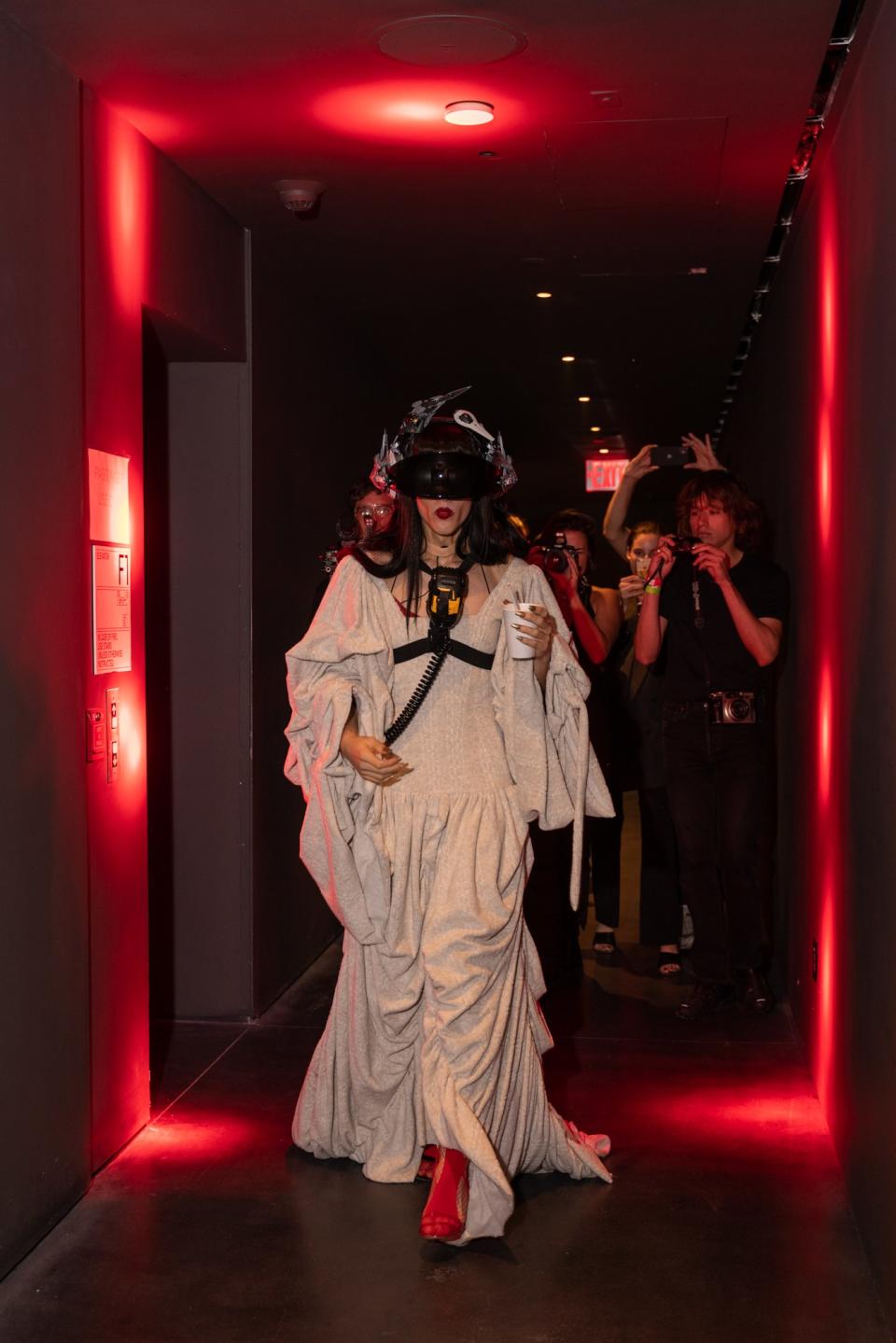
As part of the show, Arca underwent multiple costume changes in front of the audience; she also had photographers and videographers capturing the whole thing, and her glam squad retouching her makeup in real time. “Those changing moments were so fun—this is just sharing my love for fashion and trying to be a doll,” Arca says of the meta nature of her show, which also consistently broke the fourth wall. At one point, she wasn’t sure what to do next, so she asked someone in the audience to offer up a suggestion (she was told to ride the mechanical bull, which she did). The playful, improvisational nature of the shows may have come as a surprise to those only familiar with Arca’s laser-sharp, distinctly dark sonic world, but Arca doesn’t see these as mutually exclusive. “I include gore and fear into the play. I recur to this term that I made up: mutant kawaii. It’s that there’s something cute and there’s something visibly mutated and maybe less common about this kawaii mutant,” she describes. “Sometimes it’s really cute and at other times, it’s thieving and has bloodlust and wants to eat entrails nonstop for centuries. I just let this creature shape-shift at its own pace without punishing or shaming any of its impulses and instincts.”
Arca specifies that this limitless world only exists onstage, as she’s learned firsthand since her move from London to Barcelona two years ago. In her everyday life, when it comes to her sense of style, she says that she’s been thinking a lot about extroversion and flamboyance. “Sometimes I tell my boyfriend that people are staring at me because I don’t pass, and he’s like, ‘No, it’s because you’re dressed like a fucking cyborg. You’re in platform shoes in the supermarket.’” She then began toning it down more, after which she says she passed for the first time. “Now I’m coming full circle to finding pleasure in fashion. It really helped me work through and reach certain acceptances within myself. I started wearing heels way before I dared to even allow myself to ask for hormones.” For now, she’s just encouraging herself to play around in this interstitial zone between introversion and extroversion. “What I’m thinking about right now is what standing out means and what wanting to feel invisible means, because we all almost need that at certain points. Both of them are existential crises—if you blend in too much, what makes you different from anyone else? Is my individual spirit real? And if you stand out too much, you’re too much of a freak, so you’ll never belong.” She might be figuring out this balance in her everyday life, but onstage, Arca’s giving her inner mutant the spotlight.

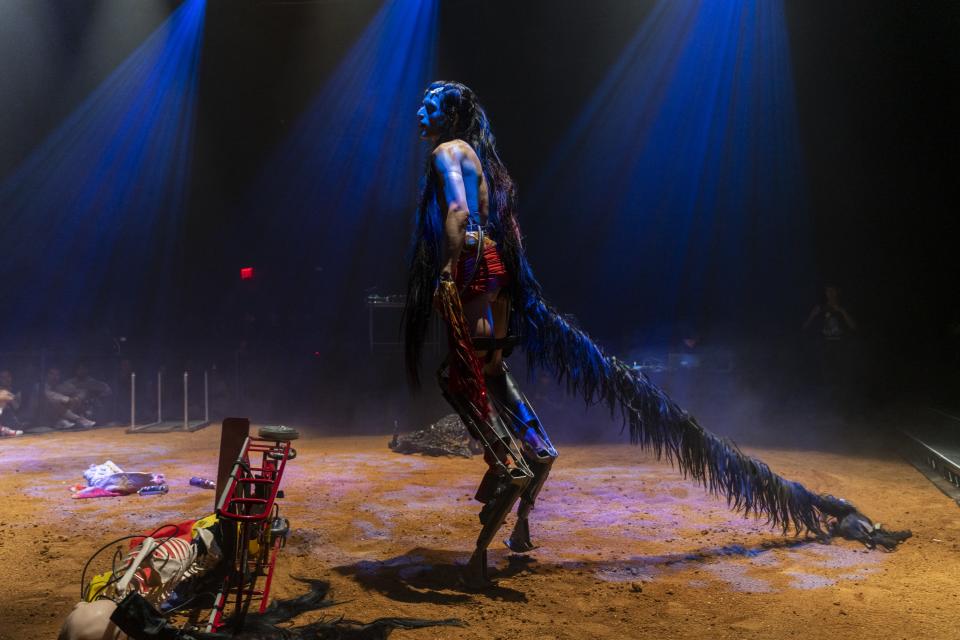
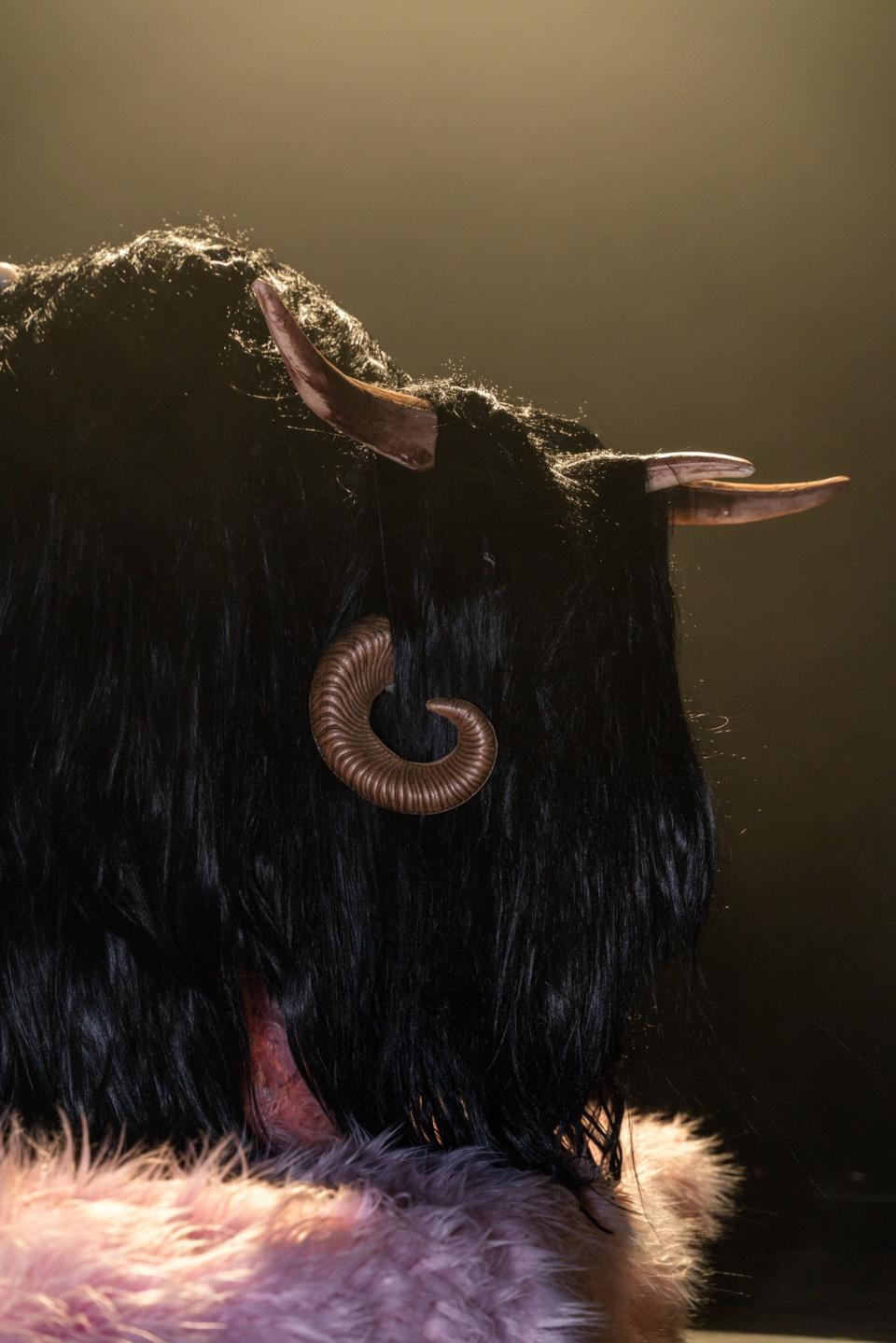

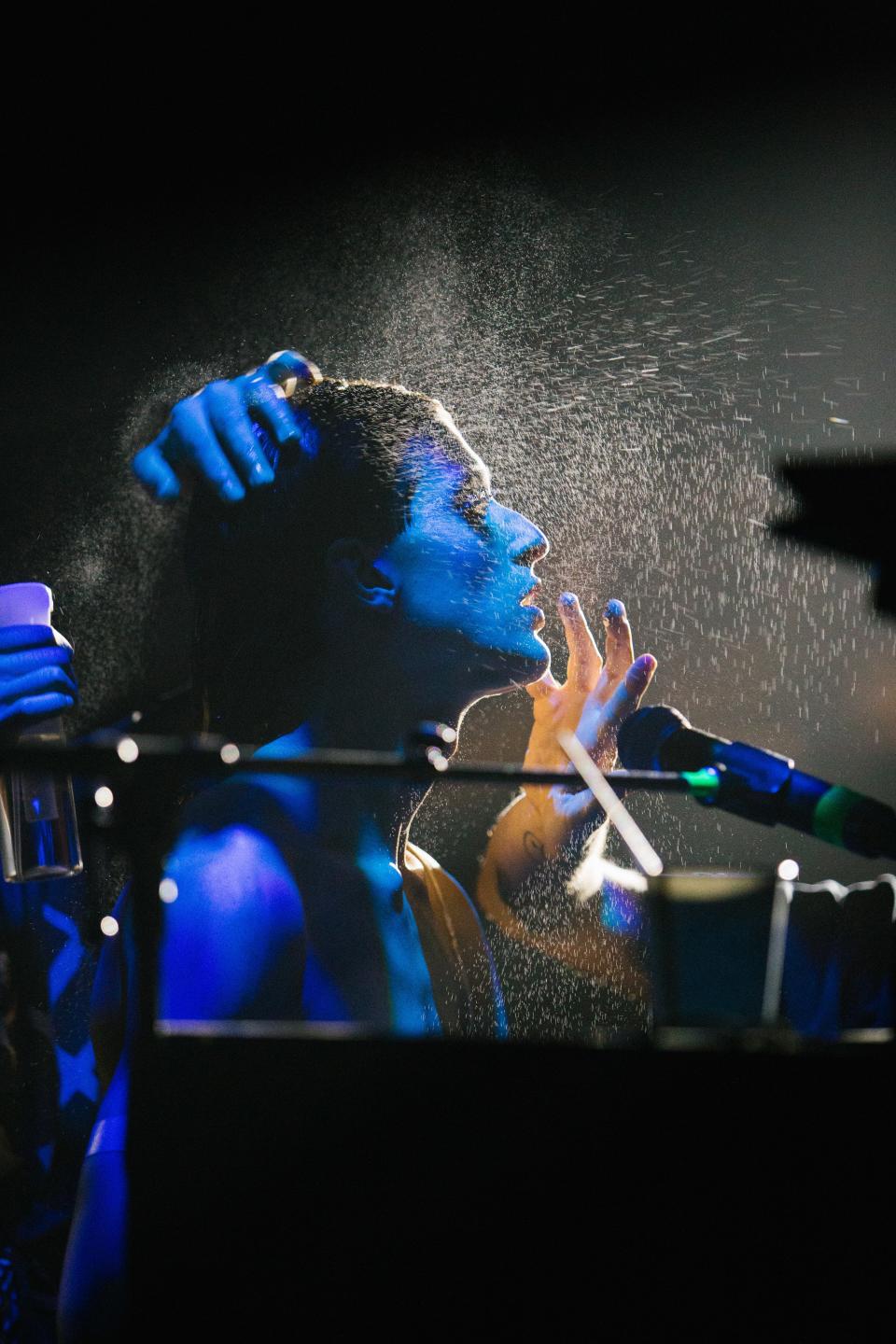
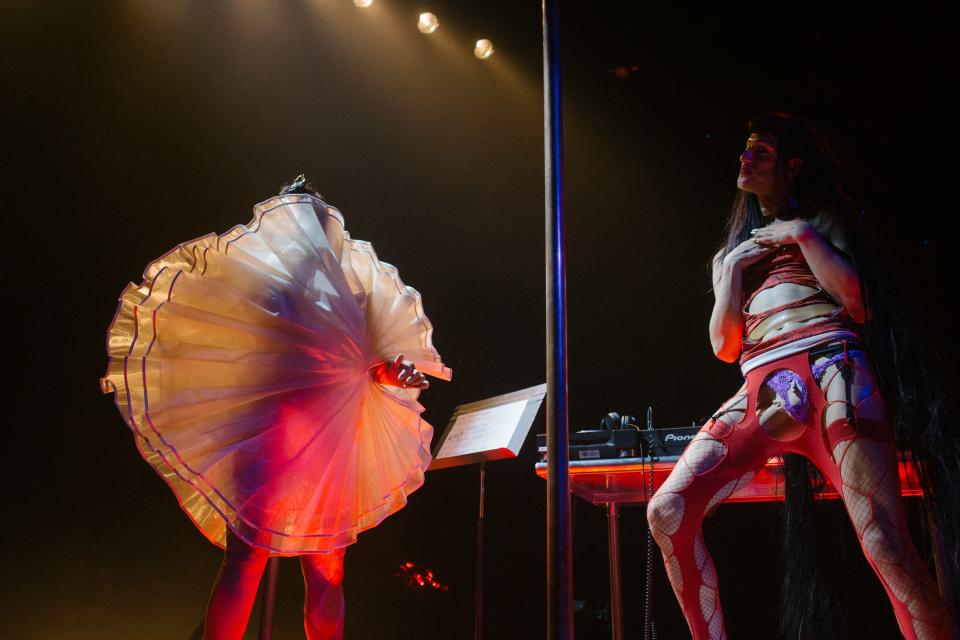

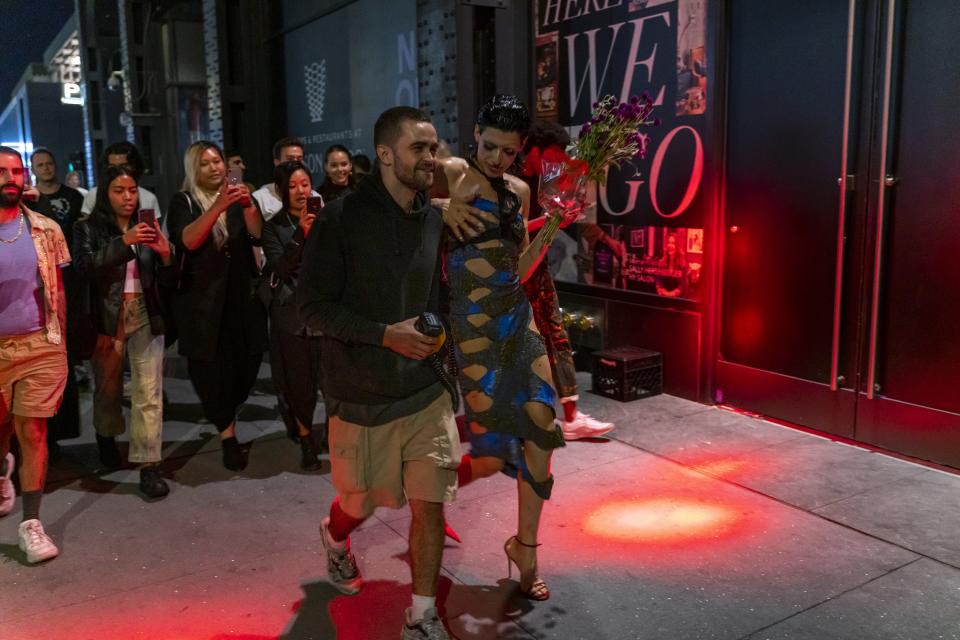

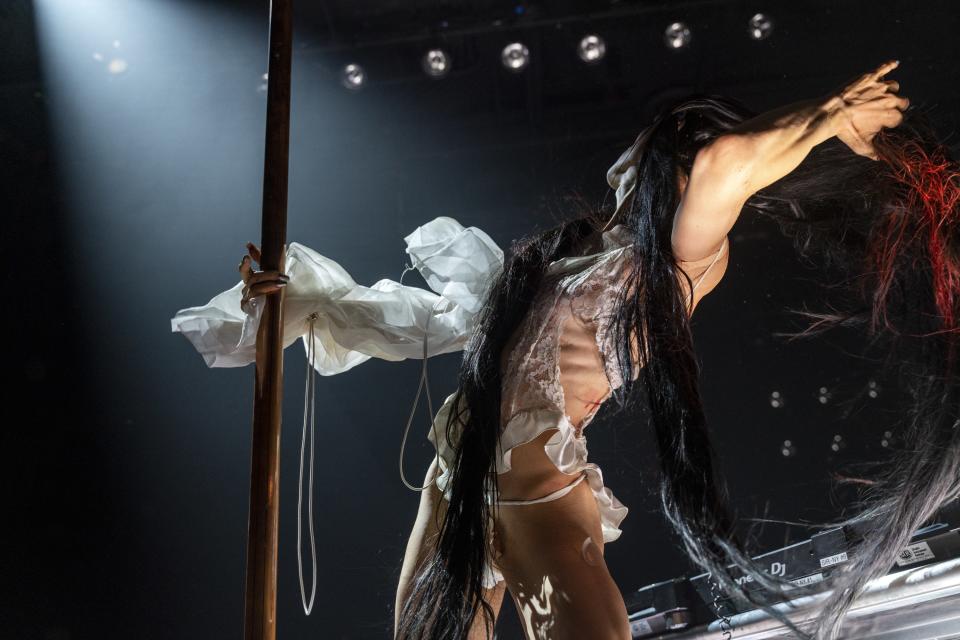
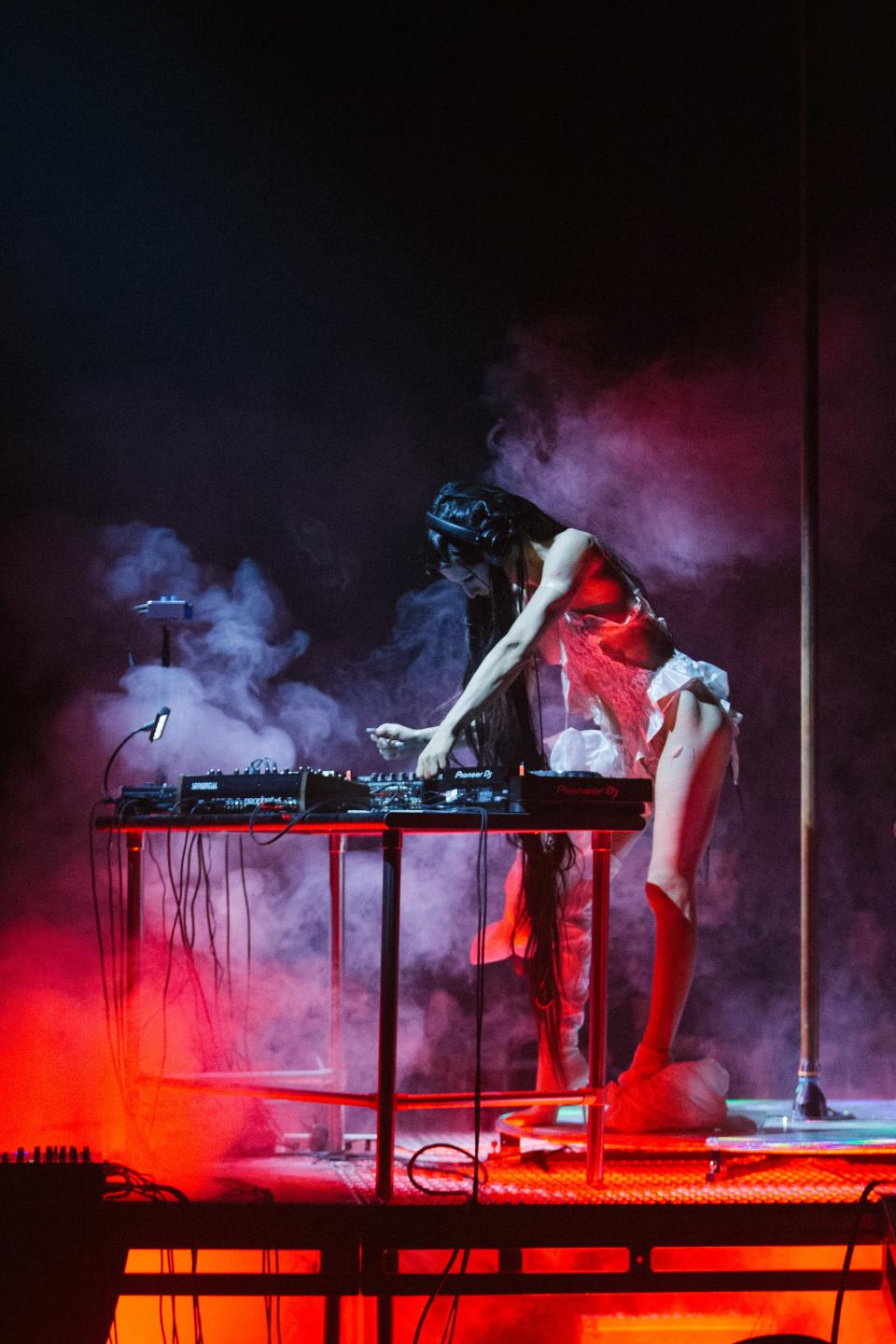
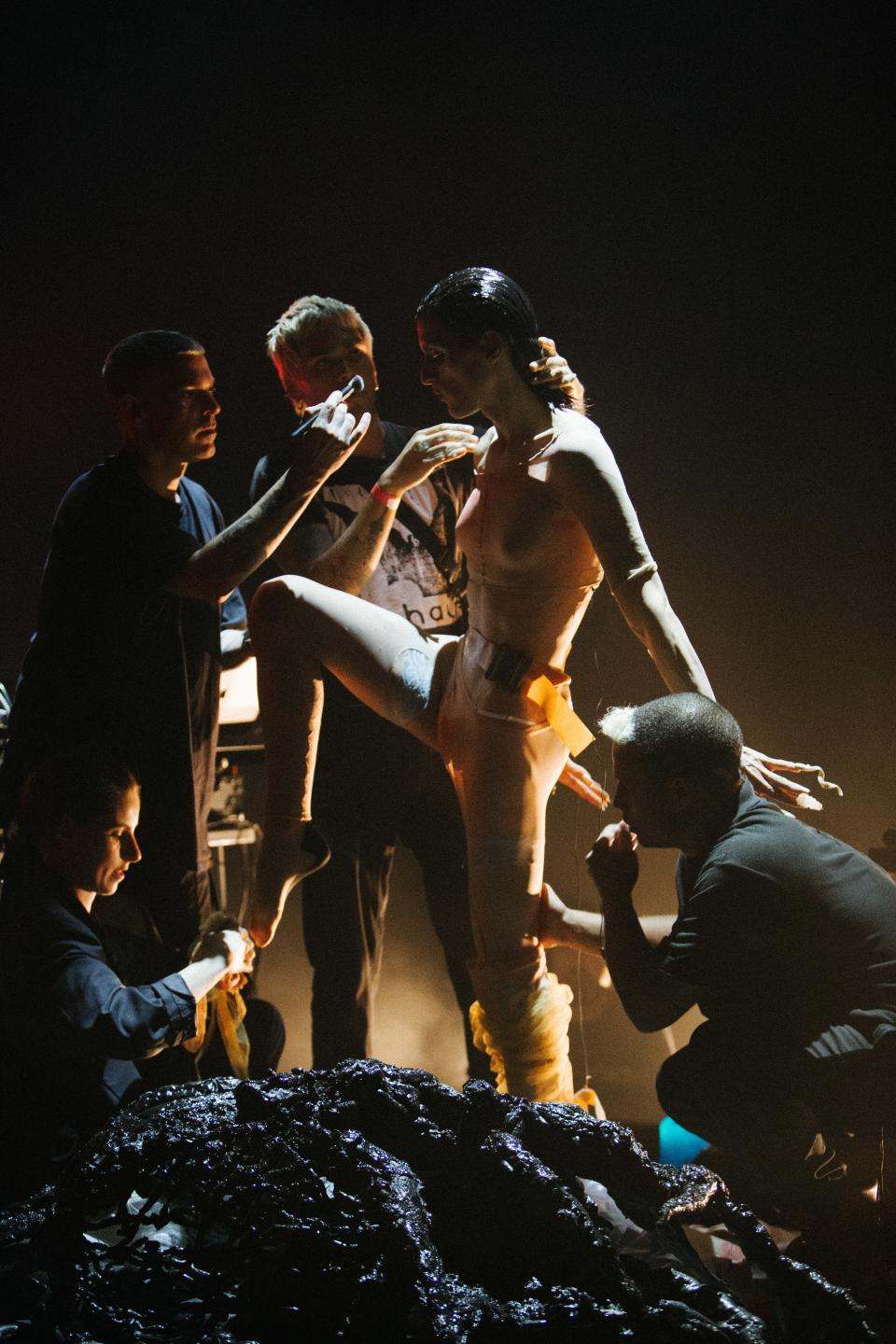



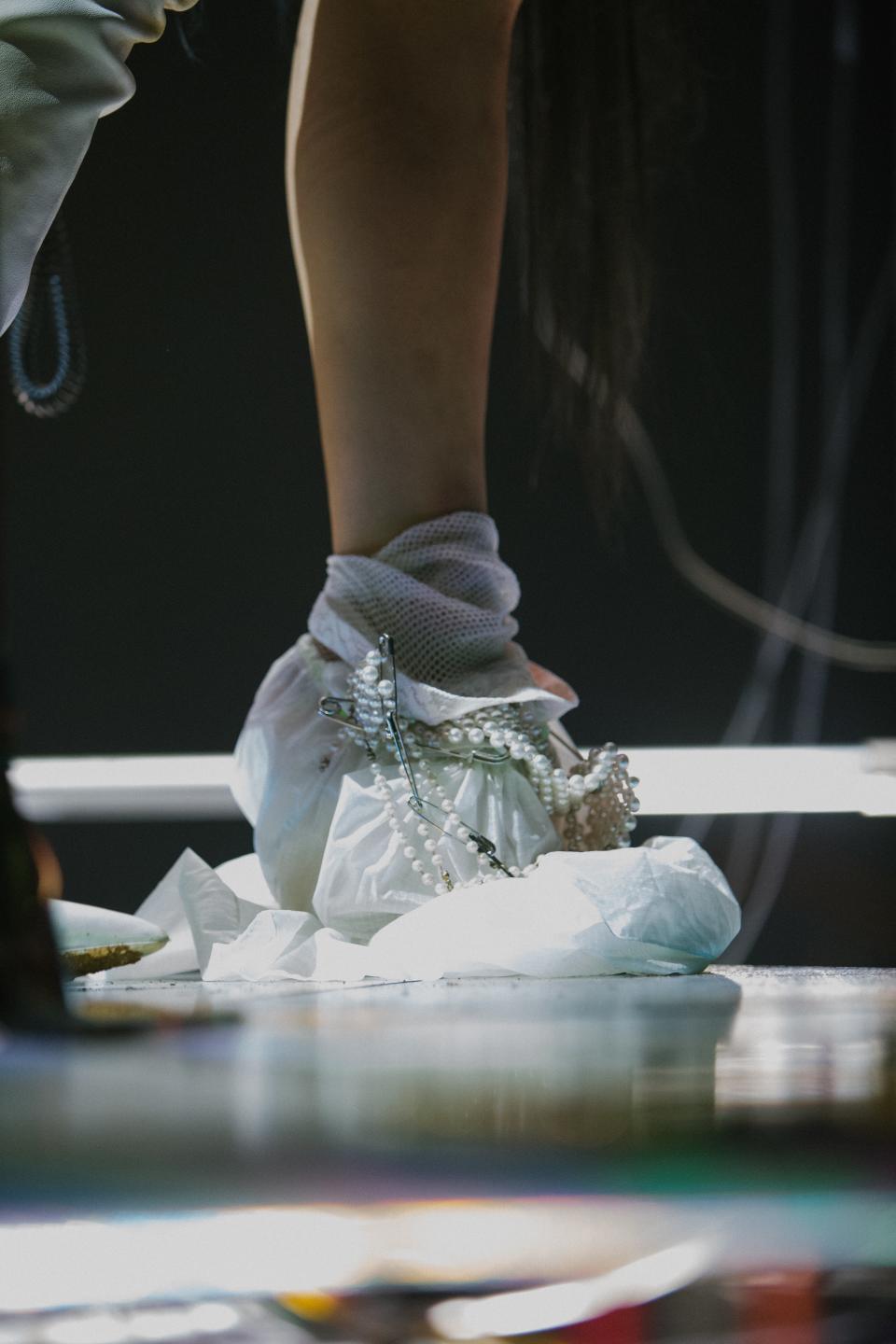
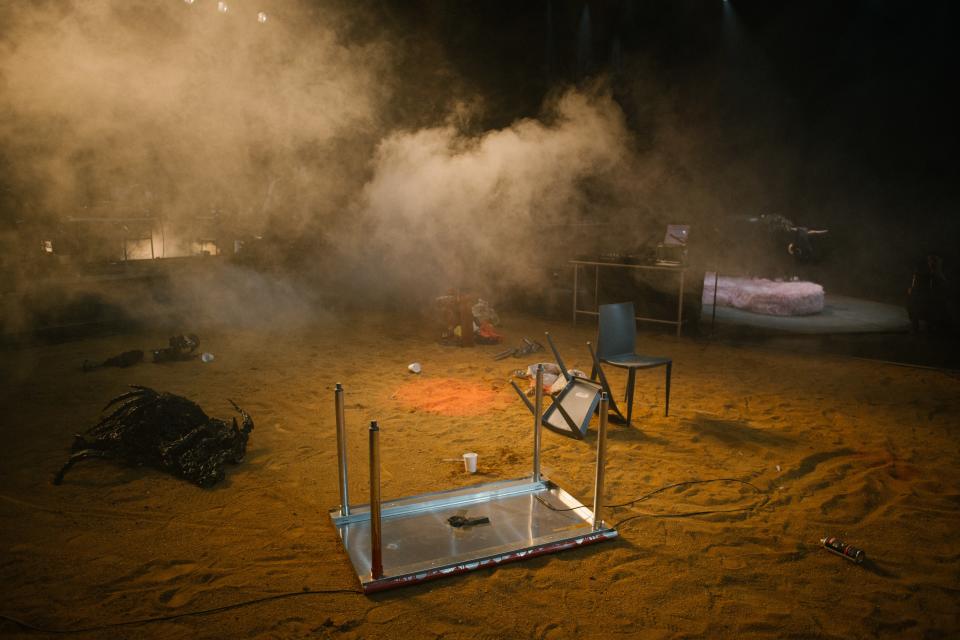
Originally Appeared on Vogue

